
Austrian postcard by Iris-Verlag, no. 5991. Photo: D.L.S. / Lux-Film Verleih.
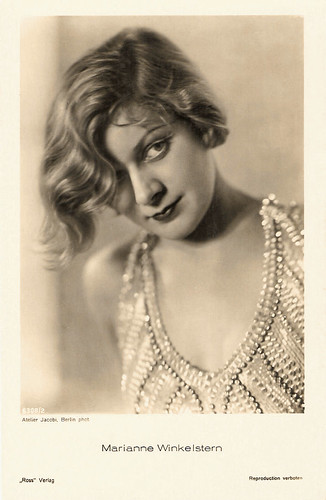
German postcard by Ross Verlag, no. 6308/2, 1931-1932. Photo: Atelier Jacobi, Berlin.
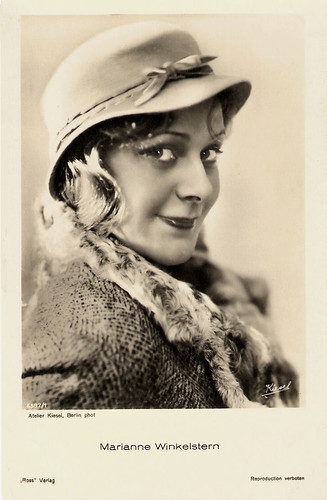
German postcard by Ross Verlag, no. 6597/1, 1931-1932. Photo: Atelier Kiesel, Berlin.
Ballet Dancer
Maria Anna Martha Winkelstern was born in 1910, in Berlin, Germany. She had two sisters, Eva and Liselotte. Her father, Adolf Winkelstern was the owner of a successful import firm of caviar. He was the official supplier of the German Kaiser. He also owned Hotel Viktoria, a summer hotel in Misdroy auf Wollin.
After 1916 business went bad, but Marianne grew up in a sheltered family environment. Her father stimulated her to become a ballet dancer and at five she already followed dance classes by ballerina Evi Peters and also had private dance tuition. As a nine-year-old she already performed at ballet evenings, organized by her father.
In 1926 she was discovered by Eric Charell in the Dayelma-Ballett at the Berlin Wintergarten. He engaged her for his Großes Schauspielhaus, where she performed in the operetta Madame Pompadour during the 1926/1927 season. During the next years she was a member of the Schauspielhaus ensemble.
She made her film debut opposite Harry Liedtke in Der Faschingsprinz/The Carnival Prince (Victor Janson, 1928), in which she also could show her dancing capacities.
This debut was soon followed by film appearances in Die Zirkusprinzessin/The Circus Princess (Rudolf Walther-Fein, 1928) again with Liedtke, Der weisse Teufel/The White Devil (Alexandre Volkoff, 1930) starring Ivan Mozzhukhin, and the short film Die Hochzeit des Faun/The wedding of the faun (Peter Paul Brauer, 1929) with Max Tapis.
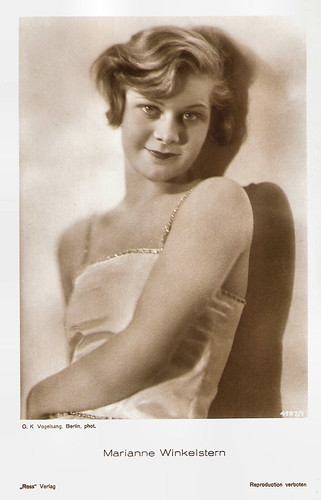
German postcard by Ross Verlag, no. 4197/1, 1929-1930. Photo: O.K. Vogelsang, Berlin.
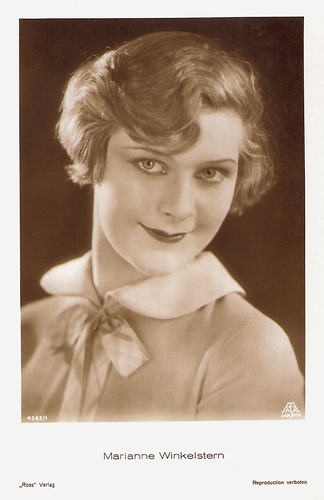
German postcard by Ross Verlag, no. 4362/1, 1929-1930. Photo: Aafa-Film.

German postcard by Ross Verlag, no. 4841/1, 1929-1930. Photo: Alex Binder, Berlin.

German postcard by Ross Verlag, no. 4361/1, 1929-1930. Photo: Alex Binder, Berlin.
Casanova
At the beginning of the 1930s Marianne Winkelstern took part in the sound films Liebeswalzer/Love Waltzes (Wilhelm Thiele, 1929-1930) starring Lilian Harvey and Willy Fritsch, Nur Du/Only You (Hermann Feiner, Willi Wolff, 1930), Die Große Attraktion/The Big Attraction (Max Reichmann, 1931) opposite Richard Tauber, Mein Herz sehnt sich nach Liebe/The Clairvoyant (Eugen Thiele, 1931) opposite Erno Verebes, and Ein Kuss in der Sommernacht/A Kiss in the Summer Night (Frans Seitz sen., 1933).
Her last film was the short musical Kannst Du pfeifen, Johanna?/Can You Whistle, Johanna? (1934, Johannes Guter) with Harald Paulsen.
Erik Charell invited her to come to London to appear as a ballerina in the musical revue Casanova at the Coliseum.
There she met her future husband from the British upper classes, and she soon retired.
Marianne Winkelstern died of lung cancer in 1966, in London.

Austrian postcard by Iris Verlag, no. 6422. Photo: Verleih Deutscher Tonfilme/Leopold Barth & Co.
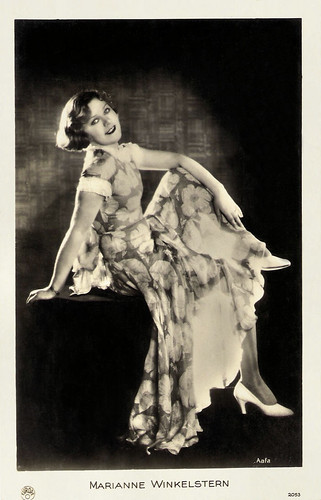
French postcard by Europe, no. 2053. Photo: Aafa.

German postcard, no. 3789. Photo: Zander & Labisch, Berlin.
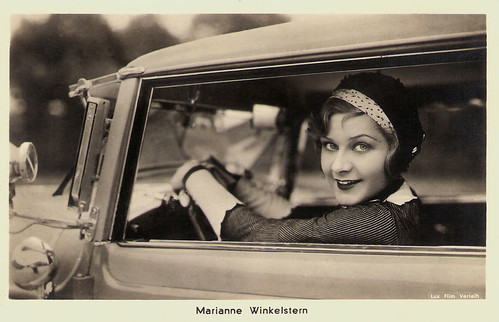
Austrian postcard by Iris, no. 6514. Photo: Lux Film Verleih.
Sources: Thomas Staedeli (Cyranos), Filmportal.de, Wikipedia (German), and IMDb.
1 comment:
die Bilder sind so cool. ich liebe retro in allem vor allem in Autos
Post a Comment